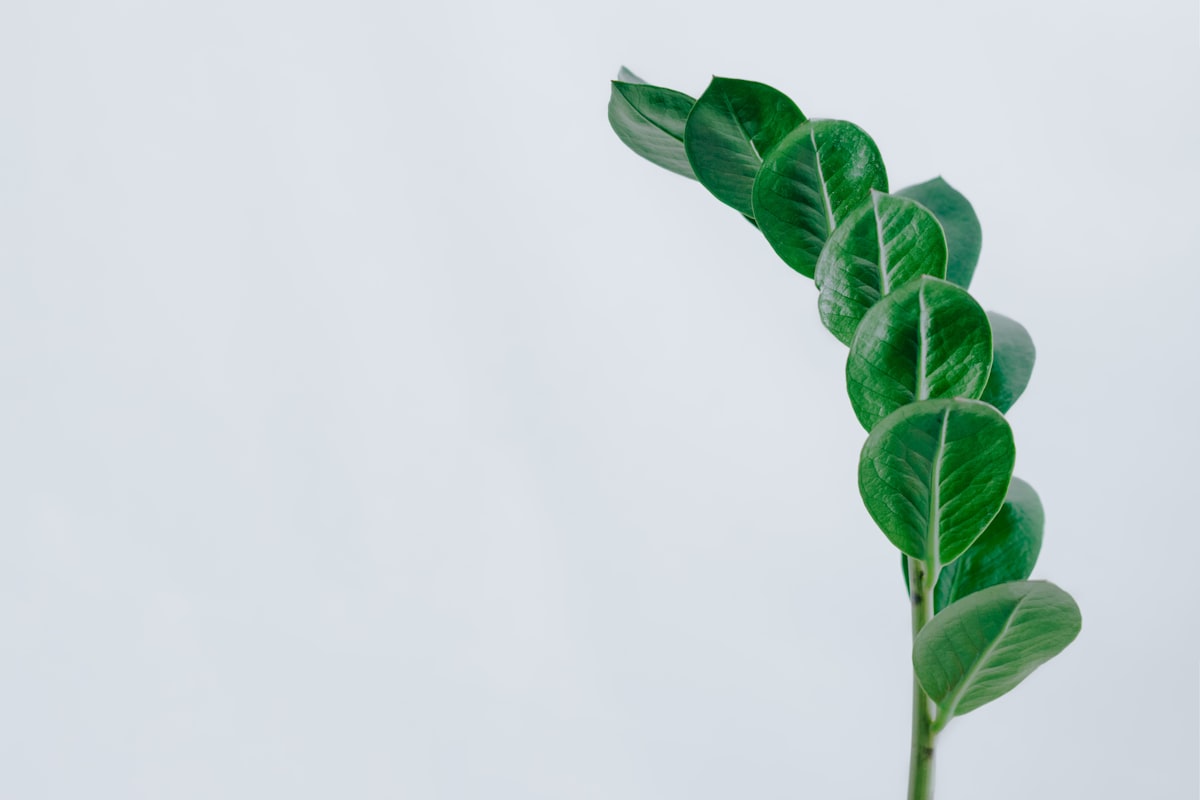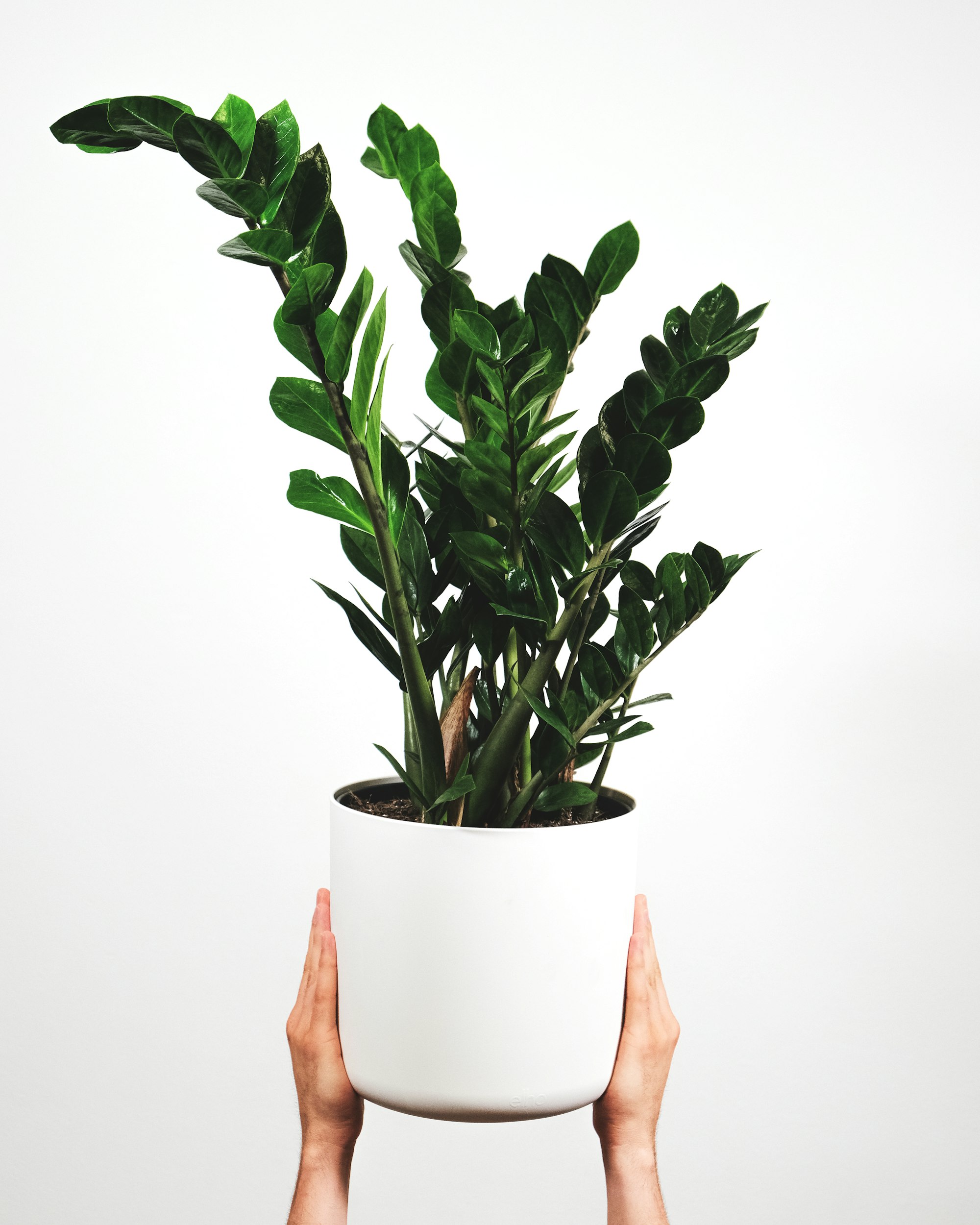How to Grow Zanzibar Gem
ZZ plants can be an exciting addition to your indoor garden, offering a low-maintenance and visually appealing houseplant. Zamioculcas zamiifolia thrives in various lighting conditions and is known for shiny, oval-shaped leaves that shoot upward, creating a lush green display.

Table of Contents
To successfully grow your ZZ plant, it's essential to understand its basic care requirements.
Providing the right light, appropriate watering, and proper fertilizing during the growing season will ensure your plant thrives and becomes a stunning centerpiece in your home.
About ZZ Plant
The ZZ plant, scientifically known as Zamioculcas zamiifolia, is a popular tropical perennial houseplant known for its low-maintenance nature and attractive appearance.
Belonging to the Araceae family, it is native to dry grasslands and forests of Eastern Africa. It goes by names such as Zanzibar gem, aroid palm, emerald palm, and Zuzu plant.
This evergreen, tropical houseplant features shiny, broad, oval-shaped leaves that shoot upward and quickly grow in a home indoors.
Its cultivar 'Raven' has dark, almost black leaves that add a touch of elegance to your living space.
With its ability to thrive in low light conditions and tolerate neglect, the ZZ plant is the perfect choice for busy individuals or those new to plant care.
Planting Zanzibar Gem
To start planting your ZZ Plant, prepare a well-draining soil mix.
Combine potting soil, perlite, and peat or coco coir for an ideal growing medium.
Place the rhizome or a stem cutting into the soil mix, and keep the soil lightly moist until the plant establishes roots.
Propagation of ZZ Plants can be achieved through either underground rhizome division or stem cuttings.
For rhizome division, gently separate the root ball during repotting, ensuring each section has visible roots and foliage.
For stem cuttings, remove a healthy leaf with some stem attached and place it vertically into moist soil, being patient as it may take several weeks for new growth to appear.

Caring for ZZ Plant
Sun and Temperature
Your ZZ Plant (Zamioculcas Zamiifolia) prefers bright, indirect light but can also tolerate low light conditions.
To keep it healthy, maintain a temperature range between 65°F and 75°F (18°C - 24°C).
Water and Humidity
As a drought-tolerant indoor plant, ZZ Plants need to be watered only when the top couple of inches of soil are dry.
They can thrive in household humidity but avoid high humidity and overwatering, which may cause yellow leaves or rotting rhizomes.
Soil and Fertilizer
Use well-draining soil with drainage holes for your ZZ Plant to prevent water-logging.
Fertilize it with an all-purpose fertilizer, but do it sparingly - roughly every two months during the growing season.
Repotting
ZZ Plants grow slowly, so repotting is only needed every 2-3 years when the roots start to outgrow the existing pot.
Choose a pot with drainage holes that is an inch or two larger than the current one.
Pruning and Propagation
Prune your ZZ Plant to control its height and spread, which generally reaches up to 2.5 feet tall.
Propagate it through leaf or stem cuttings placed in water or moist soil to create new plants.
However, if ingested, they contain calcium oxalate crystals, making them toxic to pets and children.
Troubleshooting Plant Problems
Growing Problems
If your ZZ plant is not growing new leaves, insufficient light could be the cause. Place your plant in a bright, indirect light spot to encourage growth.
Avoid cool temperatures and other stress factors, as ZZ plants typically grow from early spring to mid-autumn.
ZZ plants are known for slow growth, so don't expect rapid progress. Be patient and give the plant time to adjust to its environment.
Warmer temperatures and brighter light promote healthier growth, though direct, full sun is not recommended.
Pests and Diseases
Some common ZZ plant problems include leaf curling, brown leaf spots, black spots on the stem, yellow leaves, and leaves turning black.
To combat these issues, follow a consistent watering schedule, maintain proper humidity levels, and ensure good air circulation around the plant.
Pests like mealybugs, aphids, and spider mites can occasionally infest ZZ plants.
If you notice these pests on your plant, treat them with a natural insecticide or by wiping the leaves with a damp cloth and mild, soapy water.
If you encounter diseases such as root rot, trim away affected roots, and treat the remaining roots with a solution of one part hydrogen peroxide to two parts water before repotting with fresh soil.
Conclusion
ZZ plants (Zamioculcas zamiifolia) are low-maintenance and can tolerate low light conditions, making them ideal for indoor spaces.
To grow and care for your ZZ plant, place it in a well-draining container with light potting soil and provide bright, indirect light.
Water the plant every few weeks and apply an all-purpose fertilizer once or twice in the summer months if desired.
Remember to check the roots for potential repotting when growth spurts occur.
Following these guidelines, your ZZ plant should thrive and enhance your indoor environment.
Frequently Asked Questions
What is the best watering schedule for ZZ plants?
ZZ plants are quite drought-tolerant and don't require frequent watering. Allow the soil to dry out between waterings, and water your plant once every 2-3 weeks.
Which type of soil is ideal for ZZ plants?
Well-drained soil is crucial for ZZ plants. Use a high-quality potting mix with added perlite to achieve the desired drainage level.
How can I propagate a ZZ plant using cuttings?
To propagate a ZZ plant using cuttings, snip off a healthy stem and let the cut end callous over for a few days. Then, insert the stem into a moist, well-draining potting mix and wait for a new shoot to emerge.
Are ZZ plants better suited for indoor or outdoor environments?
ZZ plants are versatile and can thrive in both indoor and outdoor conditions. However, they are more commonly grown as houseplants due to their low-light tolerance and minimal care requirements.
What's the typical growth rate of a ZZ plant?
ZZ plants grow relatively slowly, with a growth rate of about 1-3 feet per year, depending on lighting and overall care. Proper care will help your plant maintain a steady and healthy growth rate.
Why ZZ plant is not producing new shoots?
If your ZZ plant is not producing new shoots, it could be due to lighting, water, or soil quality issues. Ensure your plant receives adequate light, is adequately watered, and has well-draining soil to encourage new growth.


